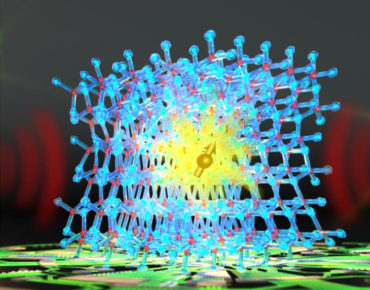Intel Delivers 17-Qubit Quantum Chip to European Research Partner

On Tuesday (Oct. 10), Intel delivered a 17-qubit superconducting test chip to research partner QuTech, the quantum research institute of Delft University of Technology (TU Delft) in the Netherlands. The announcement marks a major milestone in the 10-year, $50-million collaborative relationship with TU Delft and TNO, the Dutch Organization for Applied Research, to accelerate advancements in quantum computing.
Like IBM, Microsoft and Google, Intel is developing quantum computing technologies with the goal of building a commercial universal quantum computer that is some thousands of times larger than today’s prototypes.Quantum supremacy — the threshold when quantum machines outperform their classical counterparts on select problems — will be reached at roughly 50-qubits, but delivering on quantum’s promise for applications like chemistry, materials science and cryptography is going to require machines at least 1,000 times that scale.
Intel asserts that its fabrication and packaging expertise give it a leg up on its competitors in the space.

“We tapped into our existing knowledge of both fabrication and packaging here at Intel to build a packaged 17-qubit chip that has been optimized for the low-temperature [20 millikelvin – 250 times colder than deep space] environment,” said Jim Clarke, Intel’s director of quantum hardware.
The heart of the advance is a new architecture that improves reliability and thermal performance, and reduces radio frequency (RF) interference between qubits, said Clarke, while a scalable interconnect scheme allows for 10-100 times more signals into and out of the chip as compared to wirebonded chips. Intel emphasized its “advanced processes, materials and designs that enable [the company’s] packaging to scale for quantum integrated circuits, which are much larger than conventional silicon chips.”
The quantum supremacy horizon is likely to be reached within a year or two, but building a broadly useful quantum computer is likely to require thousands or millions of qubits (the quantum version of a classical bit). That could take a decade to achieve. “We are at mile one in a marathon,” said Clarke, “there’s a lot of learning to do, but we’re in it for the long-haul. So when we design these systems we’re not designing a system for something that probably won’t be useful today; we’re designing the whole system for something that will hit the commercial viability of a large-scale system.
“When I say system, what I mean is it’s more than a chip,” he said. “If I have a million qubit chip today I wouldn’t have the infrastructure to run it. This means the control electronics, the architecture, the algorithms and the software. At Intel, we’re working on all parts of the stack because we recognize that ultimately something that’s going to be relevant to the general population and commercial value to Intel is to build that complete system.”
Despite quantum computing’s very long rampup and recent investment and R&D spurt, the field is full of open questions. It’s far from clear what the superior qubit design will be so Intel is investigating multiple qubit types. Superconducting qubits are incorporated into its newest test chip, but the company has also been working on an alternative type called spin qubit in silicon, similar to a single electron transistor in a magnetic field. The qubit in silicon technology leverages Intel’s transistor expertise, where the superconducting qubits rely heavily on innovations in its packaging space.
With both of these systems Intel’s goal is to build a universal processor. “Both systems have advantages and disadvantages and neither system has been completely solved,” Clarke told us. “There’s still fundamental physics that have to be proven on both. We have a set of metrics that we’re trying to characterize for both types and to a certain extent, we’re hedging our bets. When one technology shows itself to be more viability than the other, we would probably pick one and run with it.”
Intel says its partnership with QuTech, begun in 2015, has enabled it to go from design and fabrication to test much more quickly. “Our quantum research has progressed to the point where our partner QuTech is simulating quantum algorithm workloads, and Intel is fabricating new qubit test chips on regular basis in our leading-edge manufacturing facilities,” said Dr. Michael Mayberry, corporate vice president and managing director of Intel Labs.
“With this test chip, we’ll focus on connecting, controlling and measuring multiple, entangled qubits towards an error correction scheme and a logical qubit,” said Professor Leo DiCarlo from QuTech. “This work will allow us to uncover new insights in quantum computing that will shape the next stage of development.”
The new test chip is about the size of a quarter in a package about the size of a half-dollar coin. In the unboxing video from QuTech’s Leo DiCarlo and Intel’s Dave Michalak, the duo report that the next step is to “test and characterize all the qubits in the device [to assess] how each performs individually and also how they all perform together when they’re entangled.”
Related
With over a decade’s experience covering the HPC space, Tiffany Trader is one of the preeminent voices reporting on advanced scale computing today.










